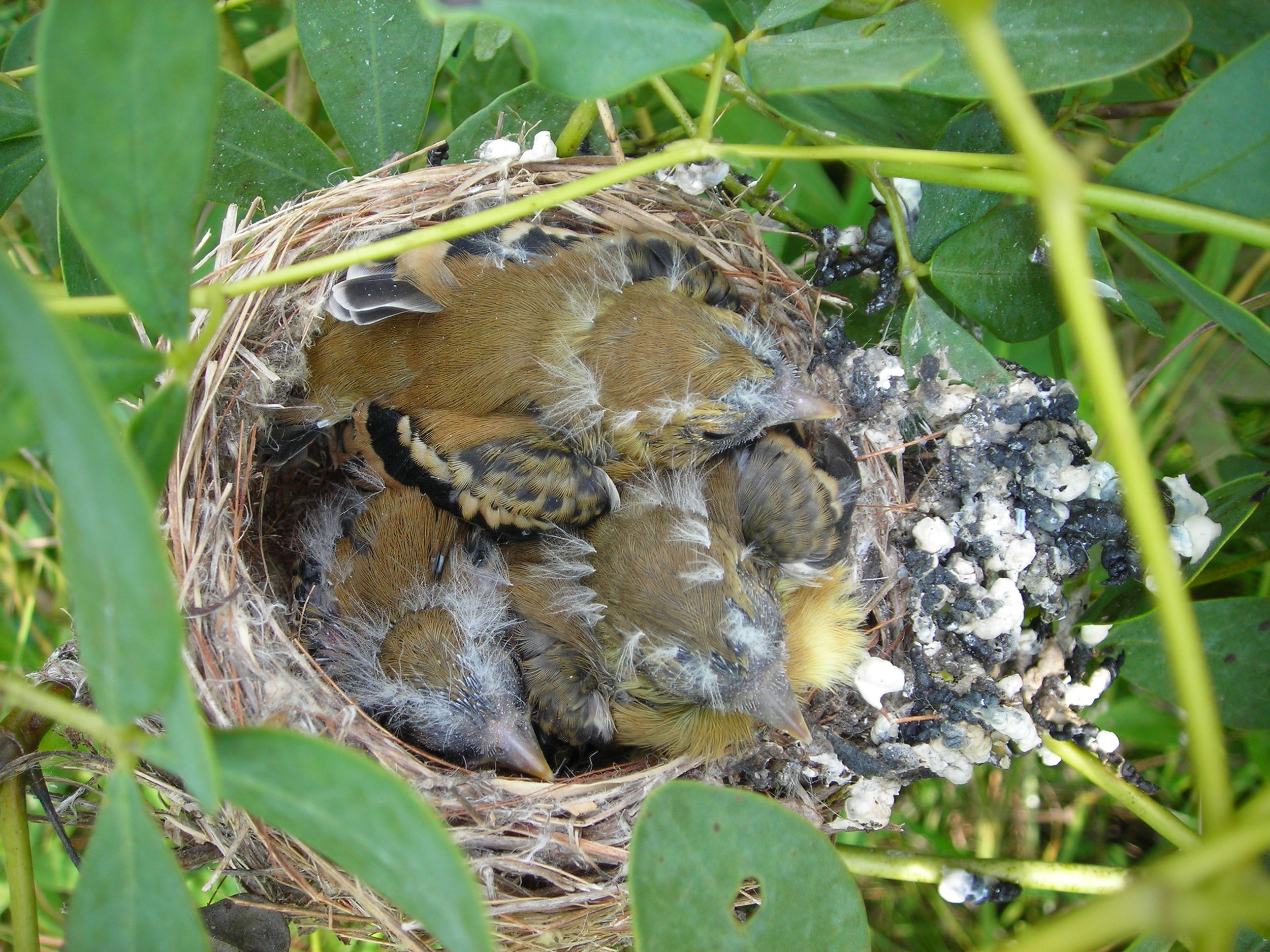This series highlights the fascinating and marvelous ecology of grassland bird nesting, written by Madison Audubon education director Carolyn Byers. Click here for all Into the Nest posts.
Keeping the nest clean is a pretty big deal. Some large raptors are able to defend their nest from nearly anything, so it doesn’t matter how messy they are. Not so for our grassland birds. They are ill-equipped to fight back against most predators, and fare much better when they’re able to go unnoticed. Dirty nests could smell strongly, and attract curious - and hungry! - mammalian predators.
This photo from a bald eagle nest cam shows that the parents are stockpiling food. There is a dead skunk in the back left of the nest, as well as several dead fish. Those eaglets will be eating well! Photo credit: Marcus Schneck
We already touched on one aspect of nest cleanliness: parents remove or eat eggshells immediately after chicks hatch. There’s another thing they remove or eat as soon as it hits the nest: poop. Fecal matter, if we’re being scientific.
Baby birds produce what are called “fecal sacs”. A small package of poop surrounded by a mucous membrane, and about the texture of a bath oil (don’t ask me how I know that). This fecal sac is easy for parents to pick up, and doesn’t leave any mess behind in the nest. Chicks usually produce a fecal sac immediately after being fed, which is pretty convenient for the parents. Often parents will grab the sac as it is emerging from the chick before it even touches the nest. Remember, birds don’t have hands. Their preferred tool for the job is their beak.
A mama bobolink removes a fecal sac from her nest. Watch the full video below.
When chicks are young, they’re not very efficient at digesting food, and a lot of nutrients remain in their feces. At this stage, parents will often eat the fecal sacs rather than disposing of them. As chicks age, their fecal sacs become larger (harder to swallow!) and contain fewer nutrients. Parents of older chicks will usually bring the fecal sac a short distance away from the nest before dropping it.
Some birds don’t produce fecal sacs. For example, American goldfinch nestlings just try to get the poop up over the rim of the nest, creating a poop-waterfall by the time chicks fledge. Bald eagle chicks are able to launch their poop up high enough to clear the rim of the nest.
At least these American goldfinch chicks managed to contain all of their poop to one side of the nest. Photo by Carolyn Byers
No need for bald eagle parents to clean up after their chicks. Look out below! Skip to 1:25 for “the show”. Video courtesy Of Decorah Eagle Cam
Chicks stop producing fecal sacs just before they fledge. One of the signs we looked for that generally indicated a successful fledging was fecal matter in the nest.
It’s hard to spot, but can you see that little white schmear on the left of the nest? Fecal matter! The young in this nest successfully fledged (we double checked the camera footage). Photo by Carolyn Byers
Here is some remarkable footage of Northern cardinals feeding their chicks and cleaning up fecal sacs. Video by FYV FrontYardVideo
The footage isn’t as beautiful as the cardinals, but here you can see the same behaviors taking place at a boblink nest. The female returns to the nest to feed her chicks, and then leaves carrying a white fecal sac in her mouth. Since it is so large, she will likely drop the sac a little ways away from the nest.
When compared to how some of these birds clean up after their young, it makes changing diapers seem a little less disgusting!
* * * * * * * * * * * * * * * * * * * * * * * *
Dickcissels are a beautiful, migratory grassland bird that benefits from the Migratory Bird Treaty Act. Photo by Kelly Colgan Azar
This summer, to celebrate Year of the Birdand 100 years of bird conservation under the Migratory Bird Treaty Act, we’ll be posting regular articles about grassland bird nesting ecology. My M.S. thesis focused on grassland bird nesting ecology, and I’m excited to share my knowledge—and stories from the field- with you! We’ll go into the nest to learn about chick behavior, adult sleep habits, feeding and fledging. We’ll discuss predation and learn about how adult birds respond to different predators. You’ll get to see beautiful photos of nests, eggs, and chicks, as well as video footage straight from the nest! Best of all, the next time you’re out hiking in your favorite Wisconsin prairie, you’ll feel a bit closer to the birds you love.
If you’re interested in reading more and can’t wait for the next post, you can read more about my thesis work here.
Stay tuned for our next edition of Into the Nest, coming soon!
Written by Carolyn Byers, Madison Audubon education director










